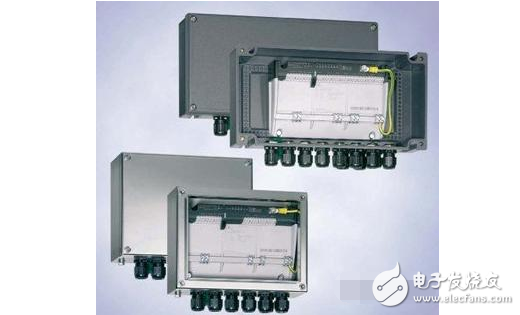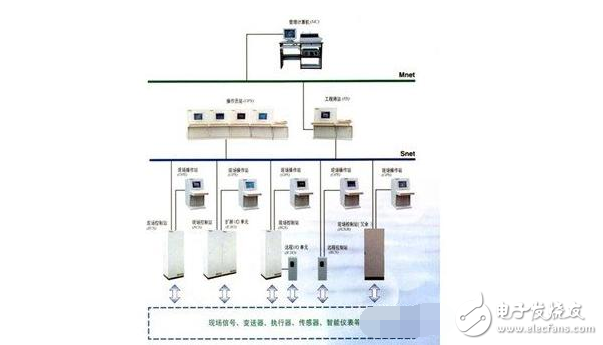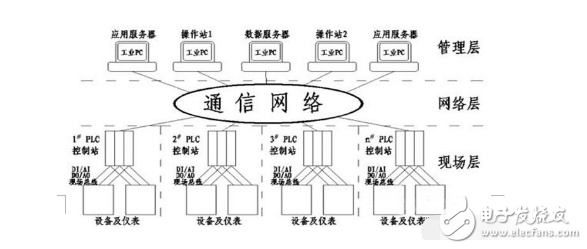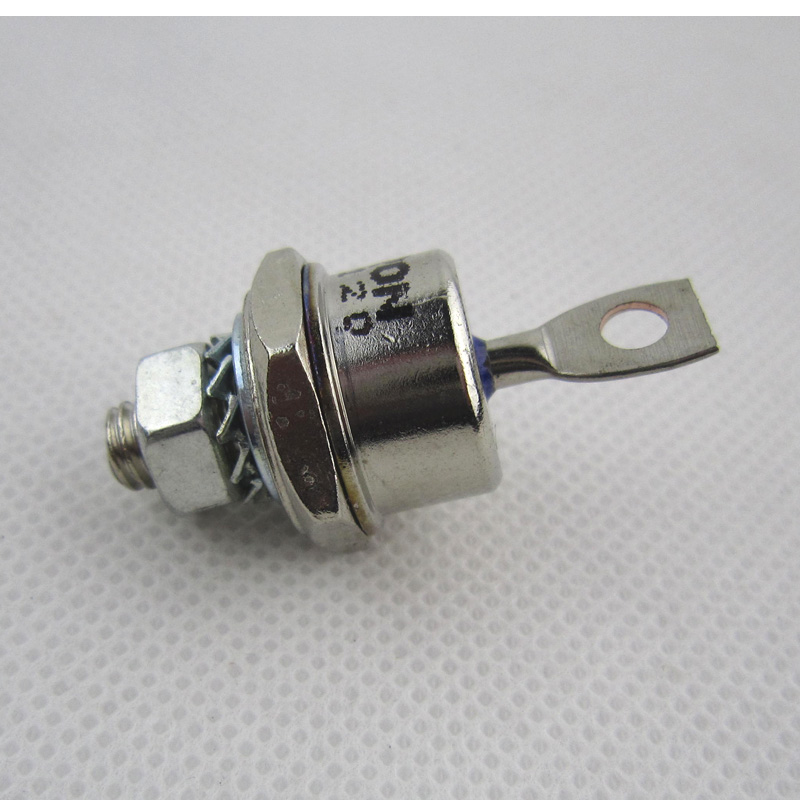The biggest characteristic of DCS in control is that it relies on the flexible configuration of various control and arithmetic modules, which can realize diversified control strategies to meet the needs of different situations, making the propositions in the unit combination instrument quite cumbersome and complicated to become simple. With the high flexibility and high efficiency requirements put forward by the enterprise, the control scheme based on the classical control theory can no longer be adapted. After the advanced control strategy represented by multivariable predictive control is put forward and successfully applied, the advanced process control is affected by the process. General concern in the industry. It should be emphasized that the extensive application of various advanced control and optimization technologies is the most effective, direct and most valuable development direction for mining and improving the overall performance of DCS. In the actual process control system, the system based on PID control technology accounts for more than 80%. The advantages and disadvantages of PID circuit play a decisive role in achieving stable, efficient and high-quality operation of the device. All DCS manufacturers use this as a powerful force to seize the market. Competitive weights were developed to develop their own PID self-tuning software. In addition, according to the control function of DCS, based on the basic PID algorithm, various improved algorithms can be developed to meet various needs of the actual industrial control site, such as PID control with dead zone, PID control with integral separation, differential first PID control, incompletely differentiated PID control, PID control with logic selection function, and so on. Different from the traditional PID control, the predictive control algorithm based on the non-parametric model predicts the future output state of the system by predicting the model, and uses the rolling optimization strategy to calculate the output of the current controller. Depending on the implementation, there are various algorithms, such as internal model control, model algorithm control, dynamic matrix control, and the like. At present, practical predictive control algorithms have been introduced into DCS. For example, IDCOM control algorithm software packages have been widely used in practical industrial processes such as hydrocracking, catalytic cracking, atmospheric distillation, and naphtha catalytic reforming. In addition, there are Honeywell's HPC, Yokogawa's PREDICTROL, Yamatake Honeywell's Kalman filter-based predictive controller developed in the TDC-3000LCN system. This kind of predictive controller does not simply put the Kalman filter before the previous predictive control for noise filtering, but uses the Kalman filter as the optimal state estimator, and performs optimal state estimation and noise filtering. There are many advanced control algorithms. At present, many domestic and foreign control software companies and DCS manufacturers are competing to develop advanced control and optimization control engineering software packages, hoping to embed advanced control and optimization control strategies in the configuration software. With the passage of time, people's requirements for industrial control systems are getting higher and higher, which has led many well-known automation companies in the world to develop more complex multi-layer industrial control networks. Among them, the industrial control network is an important part of the industrial enterprise network, and is also an indispensable part of the industrial enterprise network. 1.1 Fieldbus concept According to the definition of the International Electrotechnical Commission IEC61158 standard, the field bus refers to a data bus including digital, multi-point, serial communication between the field device in the manufacturing process area and the automatic control device in the control room, that is, the industrial data bus. It is an underlying communication network that is open, digital, and multi-point communication. The industrial control system with fieldbus as the core technology is called Fieldbus Control System (FCS), which is a new network integrated full distributed control system developed since the late 1980s. Among them, the fieldbus system is generally referred to as the fifth generation control system. The first generation control system is the PCS pneumatic signal control system before the 1950s, the second generation is the electric analog signal control system such as 4~20mA, the third generation is the digital computer centralized control system, and the fourth generation is the distributed type since the mid-1970s. Distributed Control System DCS. 1.2 Fieldbus technology Fieldbus technology puts dedicated microprocessors into traditional measurement and control instruments, each of which has more or less digital computing and digital communication capabilities, and becomes a network node that can independently undertake certain control and communication tasks. They transmit information through various ways such as ordinary twisted pair, optical fiber, and coaxial cable, so that a network system in which a plurality of measurement control instruments, computers, and the like are connected as nodes can be formed. The network system further realizes data transmission and information sharing between a plurality of computerized automatic control devices located at the production site and between the field instruments and the remote computer used for management and monitoring according to the specification and the public communication protocol. A variety of automatic control systems to meet actual needs. As shown in Figure 1, it is a simple fieldbus system. 1.3 Classification of Fieldbus Typical fieldbus technologies include FOUNDATION Fieldbus FF (FoudaTIon Fieldbus), LonWork Fieldbus, Profibu Fieldbus, CAN Fieldbus and HART Fieldbus. 1.4 Characteristics of Fieldbus Technology Fieldbus technology has system openness, interoperability and interoperability, intelligent and functional autonomy of field devices, high degree of system structure dispersion and adaptability to the field environment. The open system refers to the disclosure of communication protocols, and devices of different manufacturers can also interconnect and exchange information with each other. An open system can be connected to any other device or system that adheres to the same standards. This allows users to freely combine products from different vendors according to their needs. In addition, the fieldbus technology has the following advantages: saving hardware quantity and investment, saving installation costs, saving maintenance costs, users have a high degree of system integration initiative and improve the accuracy and reliability of the system. 2.1 Concept of DCS system The distributed control system, English is the Total Distributed Control System, which is the DCS system. It is a decentralized computer control system developed in the mid-1970s and is based on a microprocessor, combining control technology, communication technology, computer technology, network technology and cathode ray tube graphic display technology. The device is a brand new distributed computer control system that uses computer technology to centrally monitor, operate, manage and decentralize the production process. As shown in Figure 2, it is a DCS system. 2.2 Composition of the DCS system To date, more than a thousand types of DCS systems have been developed worldwide. Although they have their own characteristics, they all have common characteristics in terms of system composition and control functions. The distributed control system basically consists of three parts: the distributed process monitoring device, the centralized operation management device and the communication system. Its structure is shown in Figure 3. Basic structure diagram of distributed control system 2.3 Basic functions of the DCS system Although the DCS system has various forms, its functions are basically the same, including: input processing function, output processing function, control function, communication function, human-machine interface function, self-diagnosis function and redundancy technology. 2.4 Advantages of the DCS system The DCS, which uses the basic idea of ​​decentralized control and centralized display, centralized operation and centralized management, has the following features: perfect control function, perfect human-machine contact and centralized monitoring functions, flexible system expansion, high safety and reliability, and installation. Simple commissioning and good price/performance ratio. 3.1 Development of Fieldbus Technology The development of fieldbus technology is reflected in two aspects, one is the development of high-speed fieldbus technology, and the other is the continued improvement and development of low-speed fieldbus. For now, fieldbus products are mainly targeted at low-speed bus products, which are used in areas with lower operating speeds and have low performance requirements on the network. The high-speed field bus is mainly used in the interconnection control network, the connection control computer, the processing speed equipment and the connection between the low-speed field bus networks, which is necessary to fully realize the fully distributed control structure of the system. However, the current high-speed fieldbus is still relatively weak. In general, automation systems and equipment will change to the structure of the fieldbus system and will move toward a more open and unified direction. At the same time, it is impossible to accommodate only a single standard under a separate fieldbus system. Coupled with commercial interests, various fieldbus technologies have been developed in a highly competitive market environment. Therefore, there is reason to believe that in the near future, devices that concentrate bus standards will be interconnected through routing gateways and will realize information sharing. 3.2 Development of the DCS system The development of the distributed control system in the mature period is on the one hand the continuous updating of hardware and software technology, and on the other hand the development of a high-level information management system to meet the needs of enterprise development. From the hardware structure point of view, DCS in this period connected the system management module on the network node, in addition to the inter-network connector. After that, DCS combines process control, supervisory control, and management scheduling more organically. It is characterized by integration, openness and intelligence at the field level. After the 1990s, with the rapid development of communication technology, semiconductor integration technology, and people's continuous improvement of control and management requirements, a new generation of DCS systems emerged.
Fast Recovery Diode (FRD) is a semiconductor diode with good switching characteristics and short reverse recovery time. It is mainly used in switching power supplies, PWM pulse width modulators, inverters and other electronic circuits as high-frequency rectifier diodes. Free-wheeling or damper diodes are used. The internal structure of the fast recovery diode is different from that of an ordinary PN junction diode. It belongs to a PIN junction diode, that is, a base region I is added between the P-type silicon material and the N-type silicon material to form a PIN silicon wafer. Since the base area is thin and the reverse recovery charge is small, the fast recovery diode has a short reverse recovery time, a low forward voltage drop, and a high reverse breakdown voltage (withstanding voltage).
Fast Recovery Stud Diode,Stud Type Fast Recovery Diode,Fast Recovery Diode,Stud Rectifier Power Diode YANGZHOU POSITIONING TECH CO., LTD. , https://www.pst-thyristor.com


